Microsoft HoloLens Demos Impress On The Build 2015 Stage
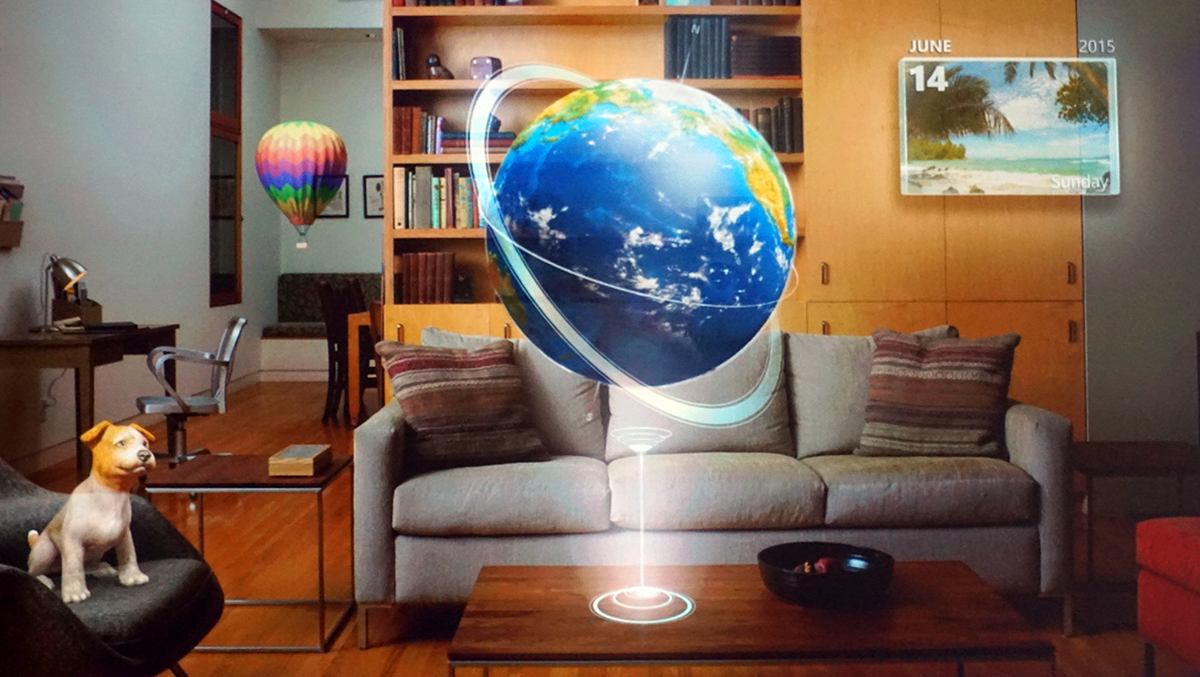
Back at the Windows 10 event in January, Microsoft shocked the tech world with the announcement of HoloLens, a holographic (augmented reality) headset that looked to blow away most any AR technology we've seen to date.
Of course...all the flashy onstage videos were just renders, and even sensational drone-building demo was clearly fully rehearsed. (That is to say, it was staged, not a live demonstration.)
We fully expected some big HoloLens news or updates at Microsoft Build this week, and we were not disappointed. It was unclear if the onstage HoloLens demos on the Build stage were staged or not, but they seemed to be happening in real time.
The Living Room
The demonstrator was able to launch and interact with some Universal Apps. What was startling is that those apps were in 3D.
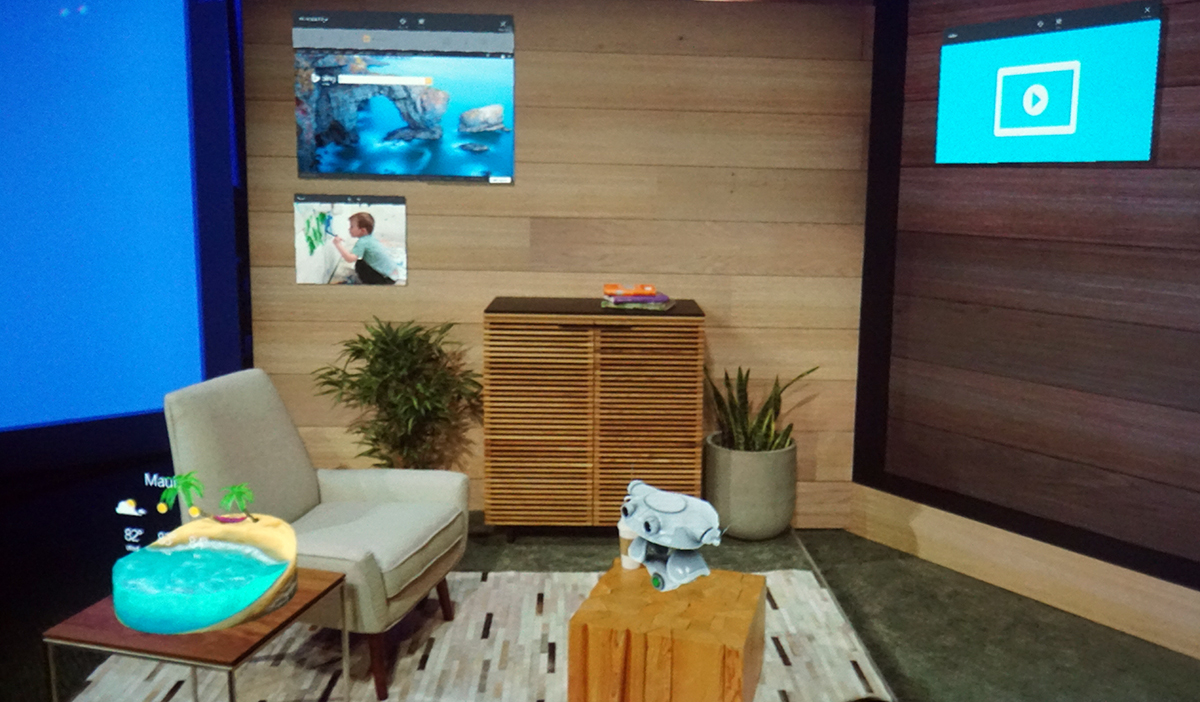
Using a special camera that allowed us to see what the demonstrator saw, he stalked around onstage in a sort of living room setup. There was a cute little robot buddy sitting on the coffee table. An island scene was on an end table next to a chair. On the wall behind that was a web browser window and an image of a child. On a wall to the right of those was a window that had a video queued up.

The island tableau was actually a weather app. He'd planned a trip to Hawaii and wanted to keep tabs on the weather, he said.
He pulled up a Start menu out of the ether and used it to open Skype. Then, using a swift gesture, he stuck it on the wall next to the browser window.
Stay On the Cutting Edge: Get the Tom's Hardware Newsletter
Get Tom's Hardware's best news and in-depth reviews, straight to your inbox.
Next, he actually played the video on the adjacent wall. Wanting to leave the room but not abandon his video, he said, "Follow me," and the video window popped off the wall and followed him. He was able to then grab it out of the air and place it on a different wall.

Then, he deftly resized the video player to fit the whole wall.
The Virtual Cadaver
In a second demo, a doctor from Case Western Reserve University brought an assistant on stage to show an interactive 3D image of a human body. We could see what the assistant saw through her HoloLens, and we watched as they pulled out the different systems of the body (in a very non-gross way, don't worry) to show the muscles, nervous system and skeleton.
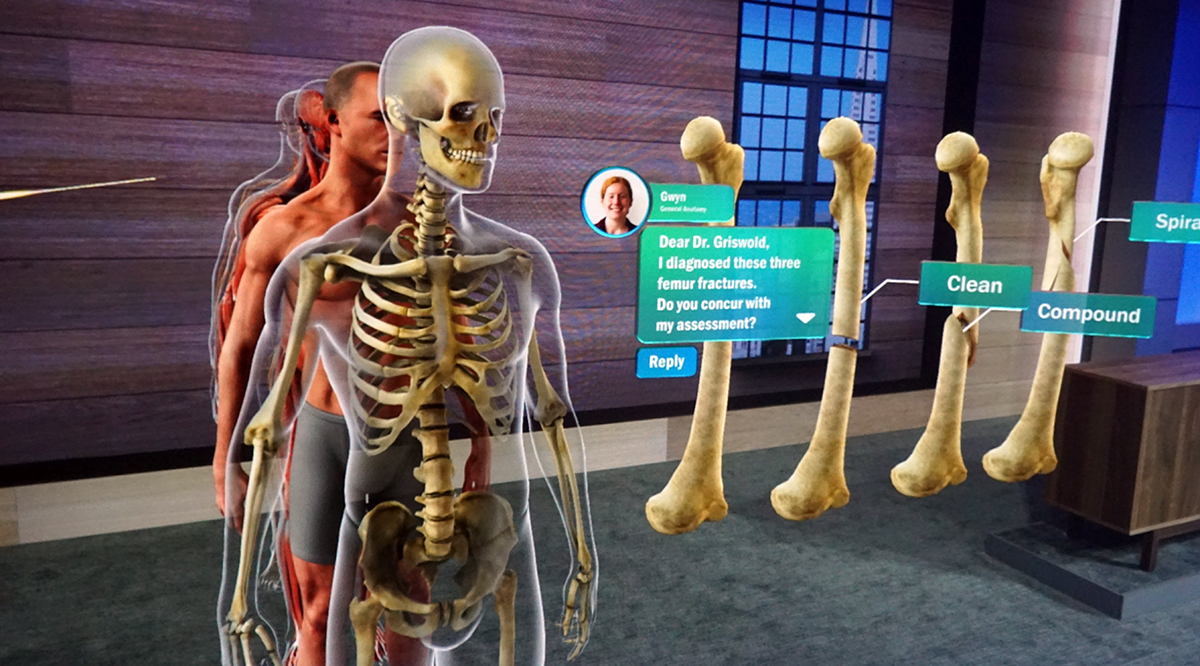
In the demo, they showed how the teacher could pull up images of bones to discuss different types of fractures. Note the thumbnail pop-up; that represents a student in (what would be) the class asking a specific question.

They also procured a hologram of a heart that they could rotate, slice and dice.
Mixed Reality With A Robot Buddy
The third and final demo was a nod to the maker space and involved a physical wheeled robot whirring out to the stage. His handler followed on his heels (er, wheels) and used her HoloLens to project a hologram -- the robot's face and arms -- on top of the physical lower part of him.
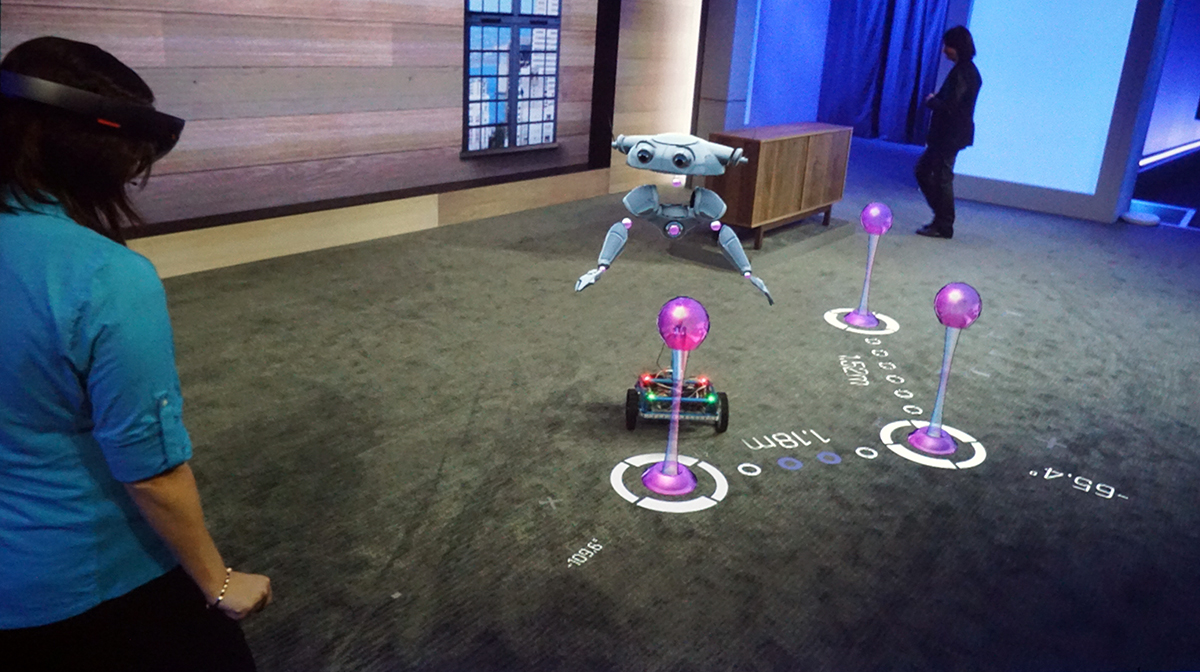
She talked to the robot, and he responded. She brought up a UI that showed navigational instructions for the robot (as well as a color palette that she used to change his lighting scheme).
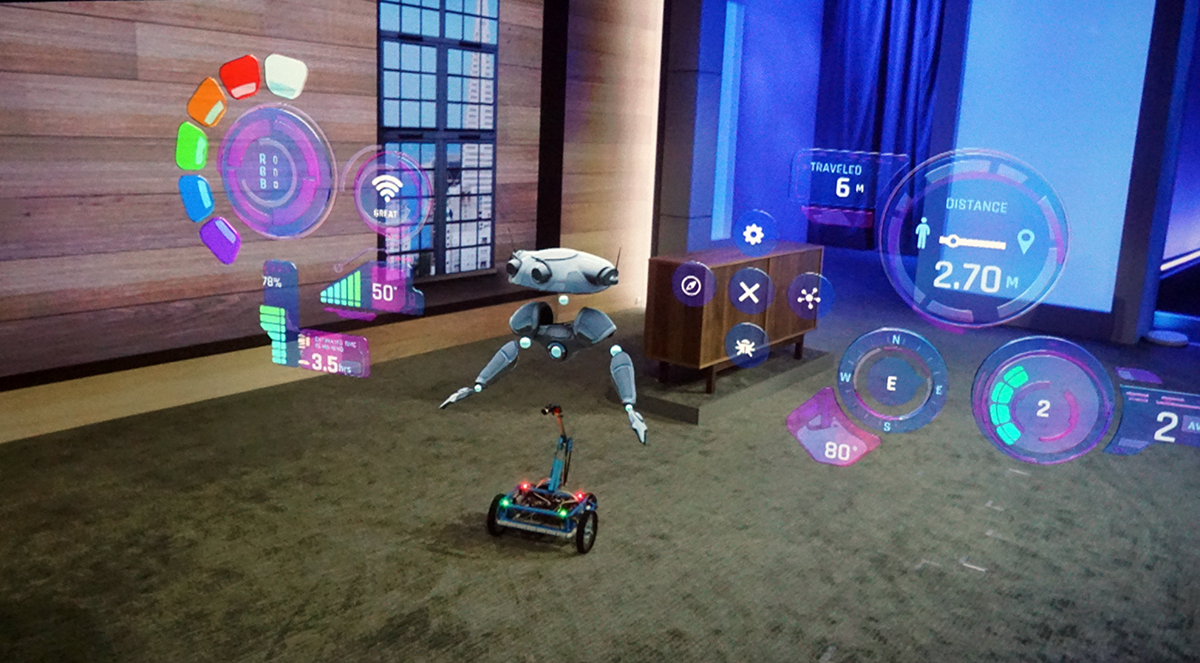
All of the intelligence was on the HoloLens; it served as the controller. The demonstrator plotted points on the floor, and the robot dutifully obeyed.
Windows Holographic Platform
The demos were impressive to say the least, but what's really amazing is that, according to presenter Alex Kipman, any Universal App can be converted into a hologram with the Windows Holographic platform.
How exactly that will work, we don't know. If what Microsoft said is true, it seems to be primarily a UI issue more than anything, along with the need to implement a few other bells and whistles such as ensuring that apps obey unique voice commands and recognize "air tap" input.
One would think that creating an interactive hologram and building an app would be completely different endeavors. Apparently, it's not.
The Hardware
Unfortunately, we don't know much at all about the HoloLens hardware itself, and we have many questions about it. Microsoft said that HoloLens has CPU and GPU, but also a Holographic Processing Unit (HPU).
There are onboard speakers, multiple cameras and sensors, and an adjustable headband for optimal comfort. The visor is apparently specially crafted, with "see-through holographic high-definition lenses [that] use an advanced optical projection system, generating multi-dimensional full-color images with very low latency," according to the Hololens product page. The device is passively cooled.

We're eager to spend some time with the latest version of HoloLens and see for ourselves how far along the technology has come and if Microsoft's new jaw-dropping demos are the truth or a parlor trick.
Stay tuned for our hands-on experience with HoloLens later this week.
Seth Colaner is the News Director at Tom's Hardware. Follow him on Twitter@SethColaner. Follow us @tomshardware, on Facebook and on Google+.
-
scolaner ReplyThe main issue I see is that people will be walking into things and tripping
Ah, no mon frere. The headset lens is transparent. All of these things are projected onto the real world.
-
DelightfulDucklings I think this device has got to be the most exciting thing shown off this year, it has such potential and I really hope it's as good as it seems. If I can project a massive screen onto any wall and use it as effectively a PC/TV then that alone will basically sell me on the device.Reply -
lancelot123 What do you thing, ten years to have this tech small enough to be built into my regular prescription eyeglasses? Seems reasonable.Reply -
XaveT I'm going to apologize in advance for this. I'm a programmer by profession, so my immediate reaction to the MS Hololens was "this is a neat idea. I wonder how the public will mess it up?".Reply
Honestly, if this takes off, I'm interested in what innovative and terrible malware there will be developed for it. My initial fear was making things that aren't there. People, monsters, cars, walls, bridges, etc. Then I thought "what about just changing things that are there?". Change an oncoming car to an oncoming squirrel, maybe move a chair 3 feet so the person sits on thin air, etc.
I'm only half kidding. I wonder if MS has something in it that can thwart stuff like that? -
agnickolov A coworker managed to get one of the limited slots to experience it directly. He said it basically feels just like what we saw projected during the keynote.Reply -
NightLight i really like the interactive lessons part. this could change the way we educate people.Reply -
qazzi How i wish MS would price this thing cheap, so that everyone could afford it(including me).Reply